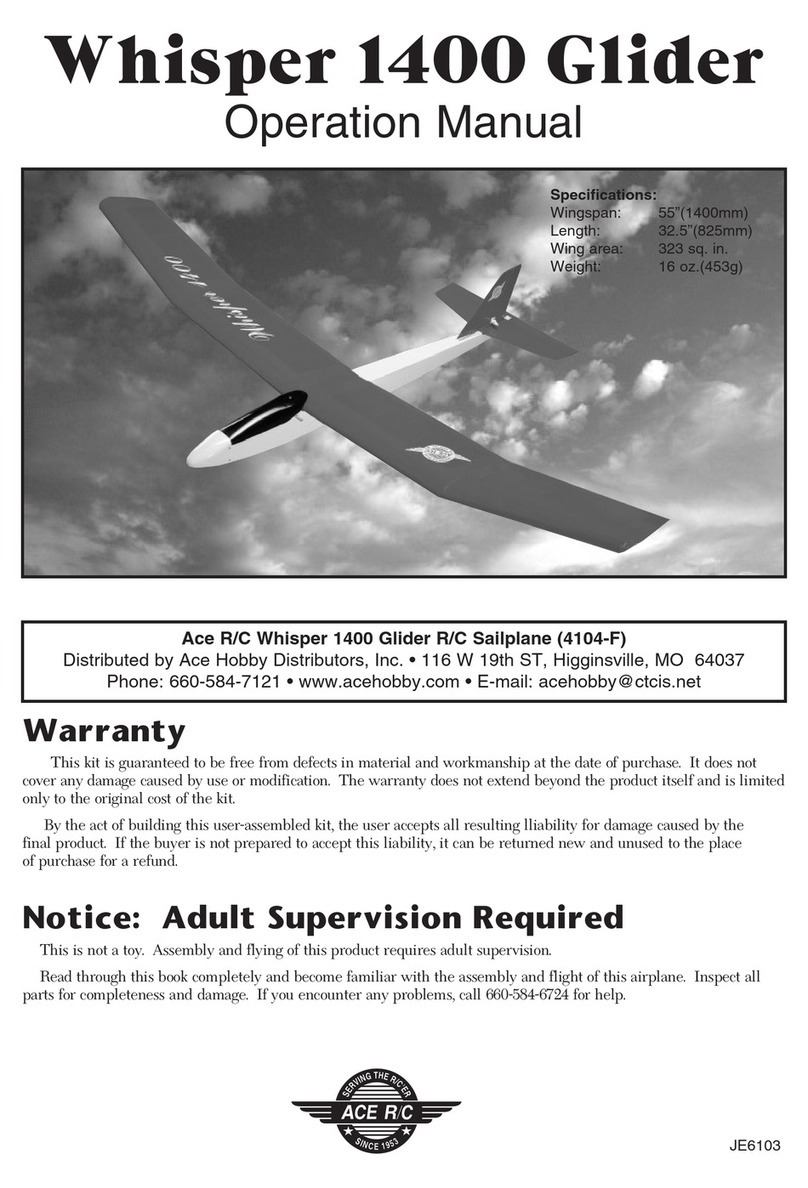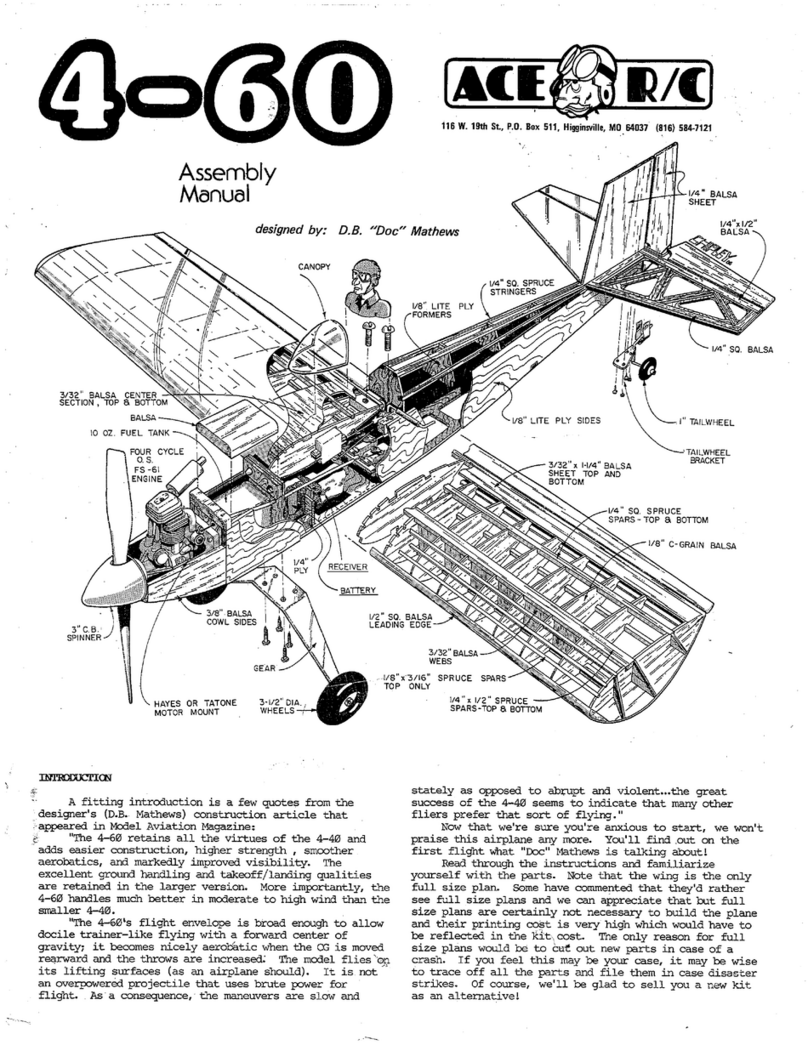10
FUSELAGE ASSEMBLY
Cut a groove in the top of the leading edge of the stab to accom-
modate the nyrod. Glue the nyrod triangular spacer onto the top of
the stab (cut away a strip of covering material first).
The outer nyrod is secured to the spacer with the nylon clamp
and wood screw furnished. It should also be glued along the leading
edge of the fin. We prefer "Zap-a-dap-a-goo", Shoe-goo", or equivalent
for this operation. CA will not stick well to the nyrod. Use masking
tape to hold while the glue dries. Also glue the outer nyrod where it
exits the fuselage and where it passes through the bulkheads.
When the glue is dry, a white covering material is furnished to
cover the exposed nyrod, if desired.
Hookup on both ends of
the inner nyrod is done via a
threaded stud and nylon clevis.
Thread a clevis onto one of the
studs so some of the threads are
exposed on the inside of the cle-
vis. Then thread this assembly
into one end of the long inner
nyrod. Insert the other end into
the outer nyrod starting at the
stabilizer end. Determine the
proper position for the elevator
control horn and mount it using
the bolts and backplate fur-
nished. Repeat for the rudder.
Locate the plastic water
rudder. Place it on the rudder so
it is in the "kicked-up" mode;
i.e., flush with the bottom and
rear of the rudder. Drill a 1/8"
hole through both the water
rudder and the rudder, using the
location that is marked on the
water rudder as a guide. Secure
with the furnished 4mm screw
and locking nut. Tighten until
the water rudder is held firmly
in the down position, yet can be
kicked-up when it hits some-
thing harder than water.
Radio Installation
Installation of the rudder and elevator servos are next.
The servo rails are laminated from two pieces of 1/8" ply to form
a part that is 1/4" x 3/8". They rest on top of the doubler that is sup-
porting the landing gear tubes. One rail fits all the way to the rear of
the doubler, and the other is spaced forward to fit the servos being
used. Plywood "U" shaped mounts further secure the rail in place. Go
ahead and install the servo rails at this time.
Install the servos next. The nosegear is linked via an EZ connect
and the inner nyrods are hooked to the servo arms with a threaded
stud and nylon clevis. Trim the nyrods to length as needed.
The receiver and battery pack should be foam mounted in the
compartment ahead of the servos. It is suggested that the receiver be
protected from water by putting it in a plastic bag or balloon. It is also
suggested to build a platform to rest the receiver on. That way if water
does get into the hull, the receiver will stay up out of the water. Also
note that you may need a servo extension cable for the throttle servo
as well as the aileron servo.
You may find it necessary to move the battery pack into the for-
ward compartment of the fuselage to achieve proper balance. If so, an
access hatch is furnished plus there is already a hole in the bulkhead
for the cable to pass through.
A good way to mount the switch is with a Dubro Kwik Switch
Mount. It is easy to install and relatively water tight. Mount it up high
in the fuselage, right under the wing saddle doubler.
Photo 30
Photo 31
Photo 32
Photo 33
Photo 34
Photo 28 Photo 29





























